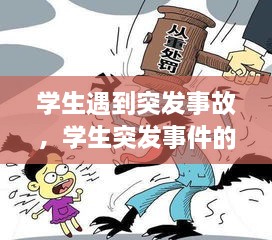學(xué)生遇到突發(fā)事故,學(xué)生突發(fā)事件的處理原則
<!DOCTYPE html>
Handling Unexpected Accidents Among StudentsUnderstanding the Challenges
Student life is often characterized by a blend of excitement, stress, and the unexpected. While schools are designed to provide a safe environment for learning, the reality is that accidents can and do happen. Understanding the challenges that arise from these unexpected incidents is crucial for both students and educational institutions.
Identifying the Common Types of Accidents
Accidents among students can vary widely, but some common types include physical injuries, chemical spills, fires, and medical emergencies. Physical injuries might occur during sports activities, playground incidents, or even due to poor infrastructure. Chemical spills and fires can result from science experiments gone wrong, electrical mishaps, or improper handling of hazardous materials. Medical emergencies can range from minor health issues to more serious conditions like heart attacks or allergic reactions.
Immediate Response: The Importance of First Aid
When an accident occurs, immediate response is key. In many cases, students themselves or their peers may be the first to react. It is essential for schools to have a well-trained first aid team or a designated first aider on campus. These individuals should be able to provide immediate care, stabilize the situation, and ensure that the injured student receives the necessary medical attention promptly.
Preparation: Training and Awareness
Preparation is a critical aspect of handling accidents among students. Schools should conduct regular training sessions for both staff and students on first aid and emergency response procedures. This includes identifying potential hazards, understanding how to prevent accidents, and knowing the steps to take in case of an emergency. Awareness campaigns can also help in fostering a culture of safety among students.
Communication: Keeping Everyone Informed
Effective communication is vital during and after an accident. School administrators should ensure that parents, guardians, and emergency services are promptly informed about the incident. Clear and concise communication can help alleviate concerns and coordinate the necessary support for the injured student. It also helps in maintaining transparency and trust within the school community.
Legal and Ethical Considerations
Accidents can have legal and ethical implications. Schools must adhere to health and safety regulations, and in some cases, they may be held liable for negligence. It is important for educational institutions to have a legal team or an advisor to navigate these complexities. This includes understanding the rights of students, the obligations of the school, and the legal procedures to follow in case of an accident.
Support Systems: Long-Term Care and Recovery
Once the immediate medical needs are addressed, the focus shifts to long-term care and recovery. This involves providing psychological support to students who may have been traumatized by the incident, as well as assistance to those with ongoing physical disabilities. Schools should have counselors and support staff who can help students cope with the emotional and psychological aftermath of an accident.
Preventative Measures: Building a Safer Environment
Preventing accidents is the best approach to handling them. Schools should regularly inspect their facilities, update safety protocols, and ensure that equipment and materials are properly maintained. This may include installing additional safety features, improving signage, and conducting risk assessments. Education on safety practices should be an ongoing part of the curriculum, reinforcing safe behaviors among students.
Conclusion
Accidents among students are an unfortunate but inevitable part of the educational experience. By understanding the challenges, preparing for emergencies, and implementing effective preventative measures, schools can minimize the risk of accidents and provide a safer environment for learning. It is through a combination of preparedness, immediate response, and long-term support that educational institutions can effectively handle unexpected accidents and ensure the well-being of their students.
轉(zhuǎn)載請(qǐng)注明來(lái)自泰安空氣能_新泰光伏發(fā)電_泰安空氣能廠(chǎng)家|品質(zhì)保障,本文標(biāo)題:《學(xué)生遇到突發(fā)事故,學(xué)生突發(fā)事件的處理原則 》












 蜀ICP備2022005971號(hào)-1
蜀ICP備2022005971號(hào)-1
還沒(méi)有評(píng)論,來(lái)說(shuō)兩句吧...